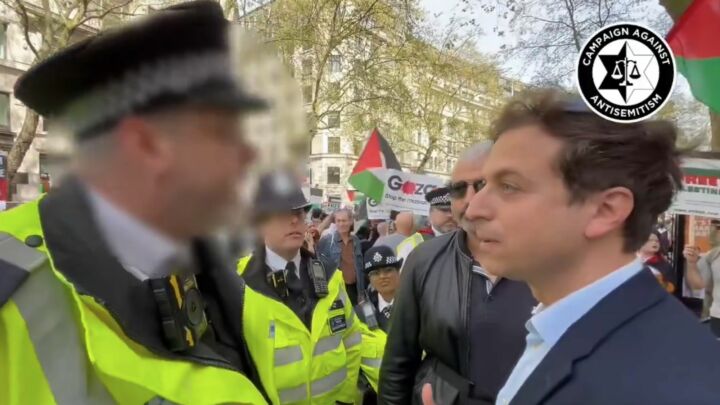Keep the Green Belt buckled
Ahead of next week’s spiked debate on the future of the Green Belt, one speaker appeals for its continued preservation. Buy your tickets now.

Next Wednesday, spiked, in association with Clarke Mulder Purdie, is staging a public debate at the Building Centre, London, where we’ll be asking if it is time to build on the Green Belt. Here, one of the speakers, Paul Miner of the Campaign to Protect Rural England (CPRE), argues that building on the Green Belt is not the answer to the UK’s housing shortage.
The legislation prohibiting development on designated areas of countryside encircling UK metropolitan areas, otherwise known as the Green Belt, is probably the best known and most popular planning policy with the general public. It has maintained the openness of the countryside around the English towns and cities it embraces since it was pioneered more than 40 years ago, and has been copied the world over, from Canada and Australia to India and Korea.
The most important qualities of Green Belts are their openness and permanence, and their purpose is to protect the countryside around urban areas from sprawl; encourage urban regeneration; prevent towns from merging into each other; and protect the countryside setting of historic towns and cities.
Developers and others constantly call for changes to Green Belt policy or a shifting of Green Belt boundaries. But this misses the fundamental point. Green Belts need to be permanently open and green as a necessary first step to realising their potential.
Not all countryside within the Green Belt is conventionally beautiful or of high nature-conservation value. David Miliband, when secretary of state for the environment, rightly pointed out in a speech to CPRE that ‘there is the potential to put the green back into the Green Belt’. Improving the quality and usefulness of our Green Belts, and protecting openness, needs a commitment to their permanence. After all, planning to improve a landscape or create a new wildlife habitat can take between 50 and 100 years.
The success of Green Belt policy is clear. It has helped to protect many of our finest landscapes and best agricultural land. Large areas of the Surrey Hills, the Cotswolds and the New Forest (now a National Park) were designated as Green Belt years before their beauty was officially recognised. Merseyside, much of which is covered by Green Belt designations, has a higher proportion of Grade One – the highest quality – agricultural land than any other area of the country.
Without a Green Belt, Birmingham would have absorbed places such as Coventry, Bromsgrove, Lichfield and Tamworth. If London had not stopped sprawling after the 1930s, it might have expanded 50 miles outwards like Los Angeles and absorbed Brighton, Cambridge and Reading.
If there is a crisis in housing, it is not one of supply. In 2006/7 we built 185,000 new dwellings following consistent year-on-year increases since 2001. In 2001 there were 668,000 more dwellings than households in England.
We do agree that more affordable housing is needed, but this should be achieved without large-scale Green Belt land releases. Much of the need for new housing can instead be met by making best use of brownfield land in our towns and cities. England currently has an estimated 64,100 hectares of previously developed land available for development, nearly half of it suitable for housing. Even at a low density, this is enough for more than a million homes. Another 700,000 homes are currently empty, and many more buildings are under-used. It generally takes less energy and fewer resources to refurbish existing buildings than to build new ones. As land and buildings are continually falling out of use, brownfield sites provide a renewable resource. A study for CPRE in 2006 (See Untapped Potential by Llewelyn Davies Yeang) found that such sites could deliver an additional 60,000 dwellings in London alone.
It makes social, environmental and economic sense for most new development to occur in built-up areas, where the infrastructure and services are already in place, rather than in the countryside. Furthermore, brownfield development can regenerate urban areas. It brings homes, jobs and services closer together, reducing car dependence and enhancing communities.
Green Belt land abuts some of our most deprived areas, such as South Bristol and the eastern outskirts of Liverpool and London. It offers opportunities for people in towns and cities to have easy access to the countryside. With time and patience, our Green Belts could truly realise their potential as tools of social and environmental justice.
Paul Miner is planning campaigner at the CPRE. He will be speaking at the spiked debate, ’Time to build on the green belt?‘ alongside Tristram Hunt, Penny Lewis, and Michael Owens. It will take place between 6.30pm and 8.30pm on Wednesday 30 April, at The Building Centre on Store Street in central London. Buy your tickets from our events page here
To enquire about republishing spiked’s content, a right to reply or to request a correction, please contact the managing editor, Viv Regan.








Comments
Want to join the conversation?
Only spiked supporters and patrons, who donate regularly to us, can comment on our articles.